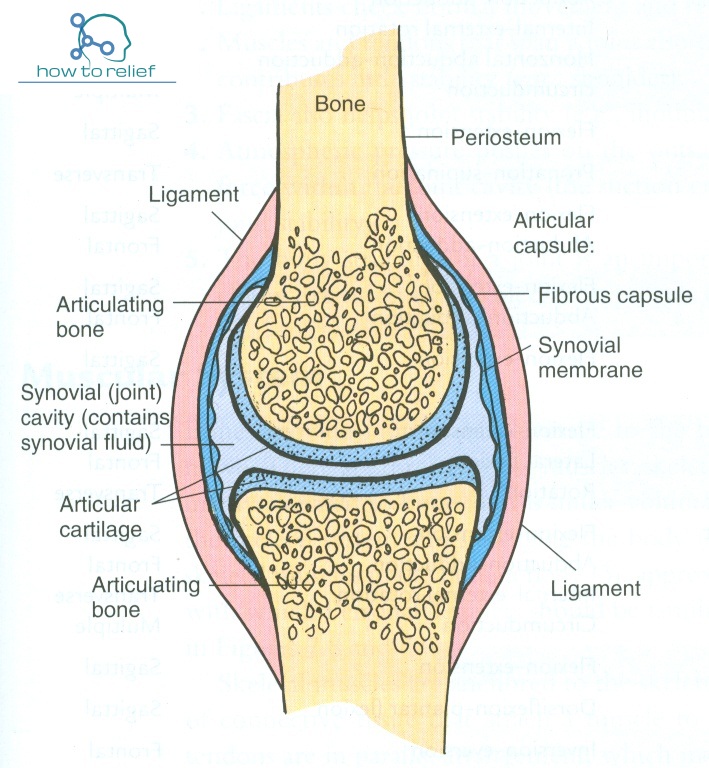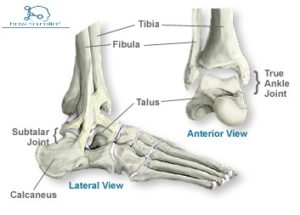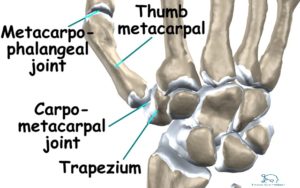Synovial Joint: A synovial joint, sometimes called diarthrosis, joins bones with a fibrous joint capsule that is continuous with the periosteum of the joined bones, constitutes the outer boundary of a synovial cavity, and surrounds the bones’ articulating surfaces, the most movable type of joint in the body. The synovial cavity/joint is filled with synovial fluid. The joint capsule is made up of an outer layer, the articular capsule, that keeps the bones together structurally, and an inner layer, the synovial membrane, that seals in the synovial fluid.

Classification of synovial joint-
• Plane joints
• Hinge joints
• Pivot joints
• Bicondylar joints
• Ellipsoid (condylar/condyloid) joints
• Saddle joints
• Ball-and-socket joints
Plane joints

In-plane joints, the opposed articular surfaces are flat or almost flat, and this permits the bones to slide or glide on one another e.g. acromioclavicular joints, intermetatarsal and some intercarpal joints.
Hinge joints

These joints resemble hinges on a door because the movement is largely restricted to one axis (transverse axis allowing flexion and extension), which means that they are uniaxial, e.g. ankle, interphalangeal and humero-ulnar (elbow) joints. Hinge joints possess strong collateral ligaments.
Pivot joints

These are uniaxial joints in which an osseous pivot in an osteoligamentous ring allows rotation only around the axis of the pivot, thus they are uniaxial. Pivots may rotate in rings, e.g. the head of the radiusrotates within the annular ligament and ulnar-radial notch, or rings may rotate around pivots, e.g. the atlas rotates around the dens of the axis. E.g. median atlantoaxial joint, superior and inferior radioulnar joint.
Bicondylar joints

Bicondylar joints are predominantly uniaxial, with the main movement in one plane, but with limited rotation about a second axis orthogonal to the first. Bicondylar joints are so named because they are formed of two convex condyles (knuckles) which articulate with concave or flat surfaces (sometimes inappropriately also called condyles). The condyles may lie within a common fibrous capsule, e.g. the knee, or in separate capsules that necessarily cooperate in all movements as a condylar pair, e.g. temporomandibular joints. Bicondylar joints allow movement mostly in one axis with limited rotation around a second axis; formed by two convex condyles that articulate with concave or flat surfaces (e.g., knee joint).
Ellipsoid (condylar/condyloid) joints

Ellipsoid joints are biaxial, and consist of an oval, convex surface apposed to an elliptical concavity, e.g. radiocarpal (wrist) and metacarpophalangeal joints. Primary movements occur around two orthogonal axes, e.g. flexion–extension, abduction–adduction, that may be combined as circumduction. Rotation around the third axis is largely prevented by general articular shape.
Saddle joints

Saddle joints are biaxial and have concavoconvex surfaces and resemble a saddle on a horse’s back. Each is maximally convex in a particular direction and is maximally concave at right angles to this direction. The convexity of the larger surface as apposed to the concavity of the smaller surface and vice versa. Primary movements occur in two orthogonal planes. The most familiar saddle joint is the carpometacarpal joint of the thumb; other examples include the ankle and calcaneocuboid joints.
Ball-and-socket joints

These joints are multiaxial and are formed by the reception of a globoid ‘head’ into an opposing cup, e.g. the hip and shoulder joints. Their surfaces, although resembling parts of spheres, are not strictly spherical but slightly ovoid, and consequently, congruence is not perfect in most positions. Indeed, it occurs in only one position, at the end of the commonest movement.

